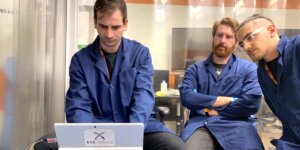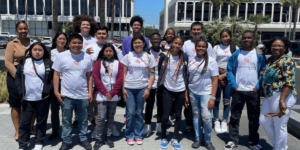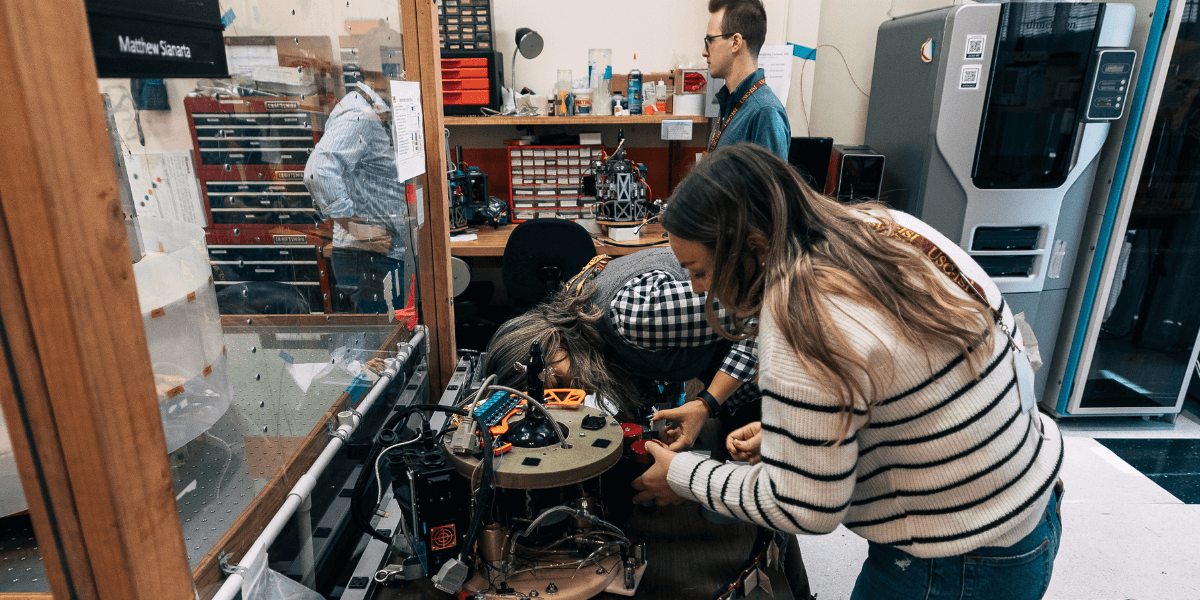
USC ISI Space Engineering Research Center (SERC) Photo Credit: Juan Miche Rosales/USC
The Space Junk Problem
Big messes call for big cleaning tools. When it comes to tidying up low Earth orbit, this isn’t a job for just anyone–or anything. Space debris come in all shapes and sizes, so they can be hard to pinpoint and even harder to capture. Leaving them to orbit around aimlessly, however, poses a huge threat.
Let’s start at the very beginning. In 1978 NASA scientist Donald J. Kessler theorized that an increasing amount of space pollution would lead to more collisions between objects in orbit, and thus more debris. This became known as the Kessler Syndrome.
This domino effect describes a cosmic crisis that is both massive and urgent. Luckily, multiple teams of researchers at USC Information Sciences Institute (ISI), a unit of the Viterbi School of Engineering, are working on solutions.
Orbital Prime
The U.S. Space Force chose ISI’s & ASTE’s Space Engineering Research Center (SERC) as one of its research partners for Phase 1 of its Orbital Prime program. The goal of the program is to further develop space debris mitigation and remediation technology, as well as the quickly growing in-space servicing, assembly, and manufacturing (ISAM) market.
The ISAM market involves the repair, refueling, assembling, and building of spacecrafts and satellites after they are launched.
ISI received 5 research grants and subsequently has five separate teams working on projects. These grants, made under the Department of the Air Force’s Small Business Technology Transfer (STTR) program, are the first phase of Orbital Prime.
This STTR mandates the partnership of companies with research institutions to explore Active Debris Remediation, which involves removing or repurposing debris, and the further development of ISAM technologies and capabilities
David Barnhart, Director of SERC, oversees four of the five projects, and highlighted the wide range of applications they have for the future of space interactions
“The technology we are working on spans the gamut from sensor fusion to see and locate different debris, to novel robotic grippers and capture technology, all the way to designing a full scale spacecraft to host different capture technologies,” Barnhart said.
The specific rendezvous and proximity operations (RPO) technology (1) SERC is working on, Barnhart says, has “potential dual use”–it applies to both Active Debris Remediation and the ISAM market.
The Octopus Gripper
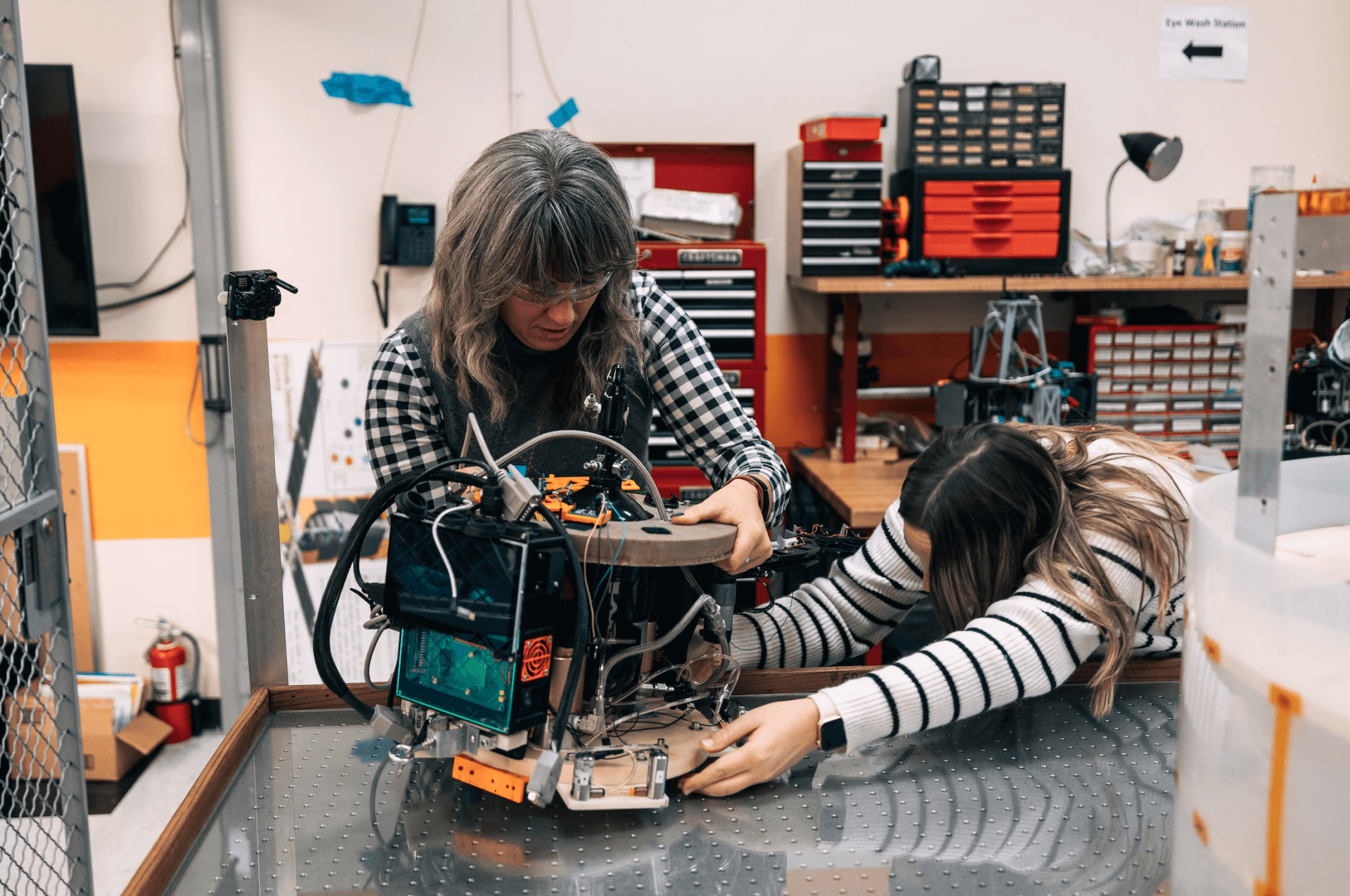
USC students working on the REACCH prototype, Kristina Andreyeva (left) and Haley Topper (Right). Photo Credit: Juan Miche Rosales/USC
One such technology is a robotic gripper whose arm was bio-inspired, modeled after an octopus. The flexible design makes it more effective at grabbing objects that are not uniform in shape and size, such as pieces of debris.
Kristina Andreyeva, an astronautical engineering graduate student at USC Viterbi, has been working on this gripper project named REACCH. REACCH was originally borne at SERC in collaboration with NASA’s Jet Propulsion Laboratory (JPL) for a Defense Advanced Research Projects Agency (DARPA) project, and then transitioned to industry partner Kall Morris Inc.
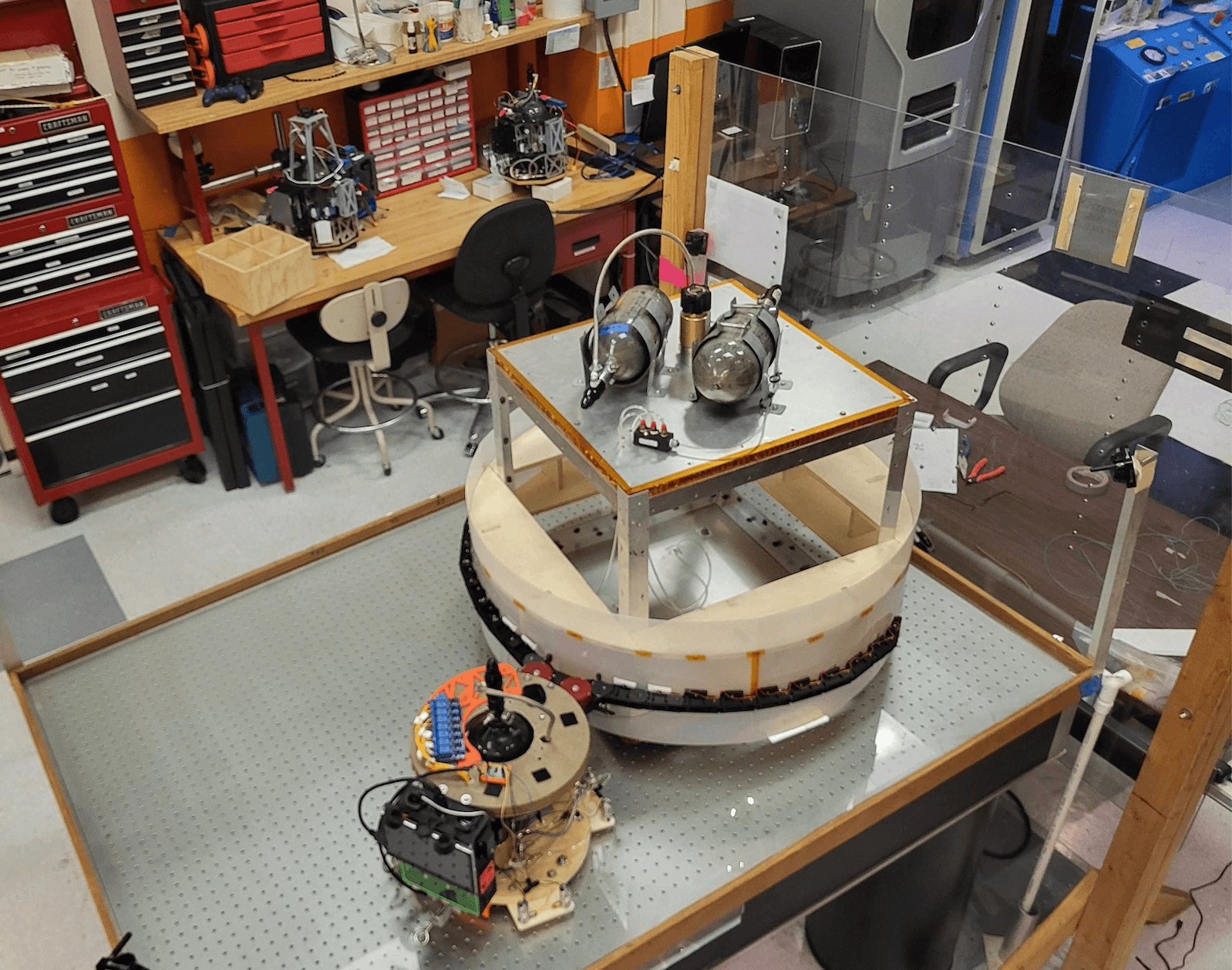
KMI REACCH mechanism grappling a large diameter object. Photo Credit: Juan Miche Rosales/USC
REACCH uses unique Gecko dry adhesive gripping tiles that “grab” objects and allows them to be captured. The tiles are similar to an octopus arm that places its suckers around objects and then is able to walk or grab them.
As a new team member, Andreyeva has been learning on and adding to a prototype originally built before the pandemic by USC/JPL engineers and students.
“We are doing a lot of testing on different materials to see how the dry adhesive is actually able to grip different surfaces,” Andreyeva said.
Fellow USC astronautical engineering graduate student, Haley Topper, works alongside Andreyeva on the gripper.
Andreyeva and Topper anticipate that this semester they will be focused on testing their functioning gripper and using the data they collect to make improvements, a process they both said they are excited about.
Going to Space
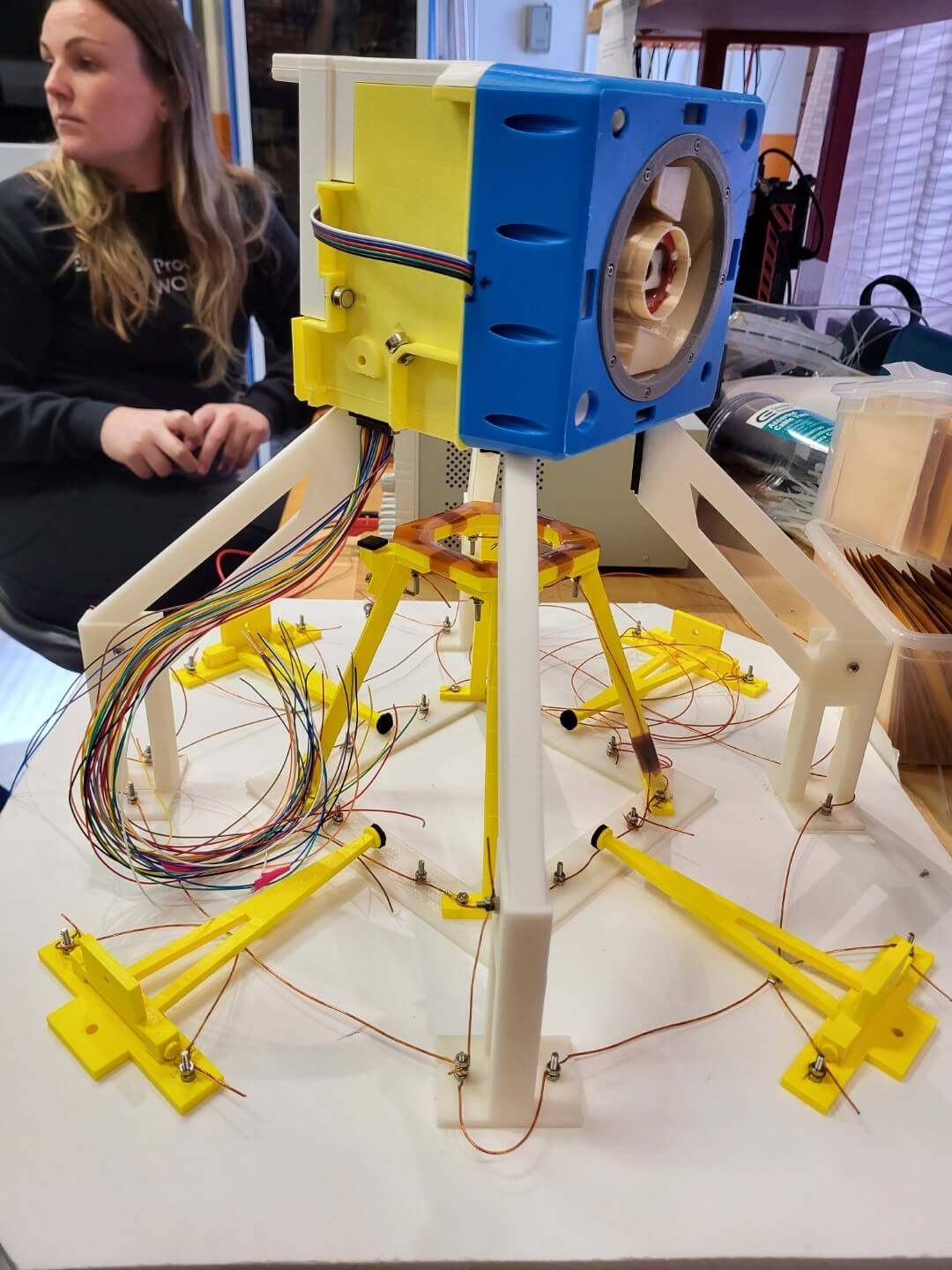
CLINGERS Unit in testing at SERC. Photo Credit: Juan Miche Rosales/USC
ISI is supporting SERC on another type of in-space docking mechanism–CLINGERS, which stands for Compliant Low Profile Independent Non-protruding Genderless Electronics Rendezvous System.
Like REACCH, CLINGERS is another form of RPO technology, but it combines both a mechanical system that involves hard-docking, where units latch together in space along with rendezvous sensors to guide it.
The project is supported by the Center for the Advancement of Science in Space (CASIS) and the International Space Station (ISS) National Laboratory, and if everything goes according to plan, the project will journey up to the International Space Station in June!
While in space, CLINGERS will run experiments while attached to little free flying drones built by NASA, called, wait for it–Astrobees.
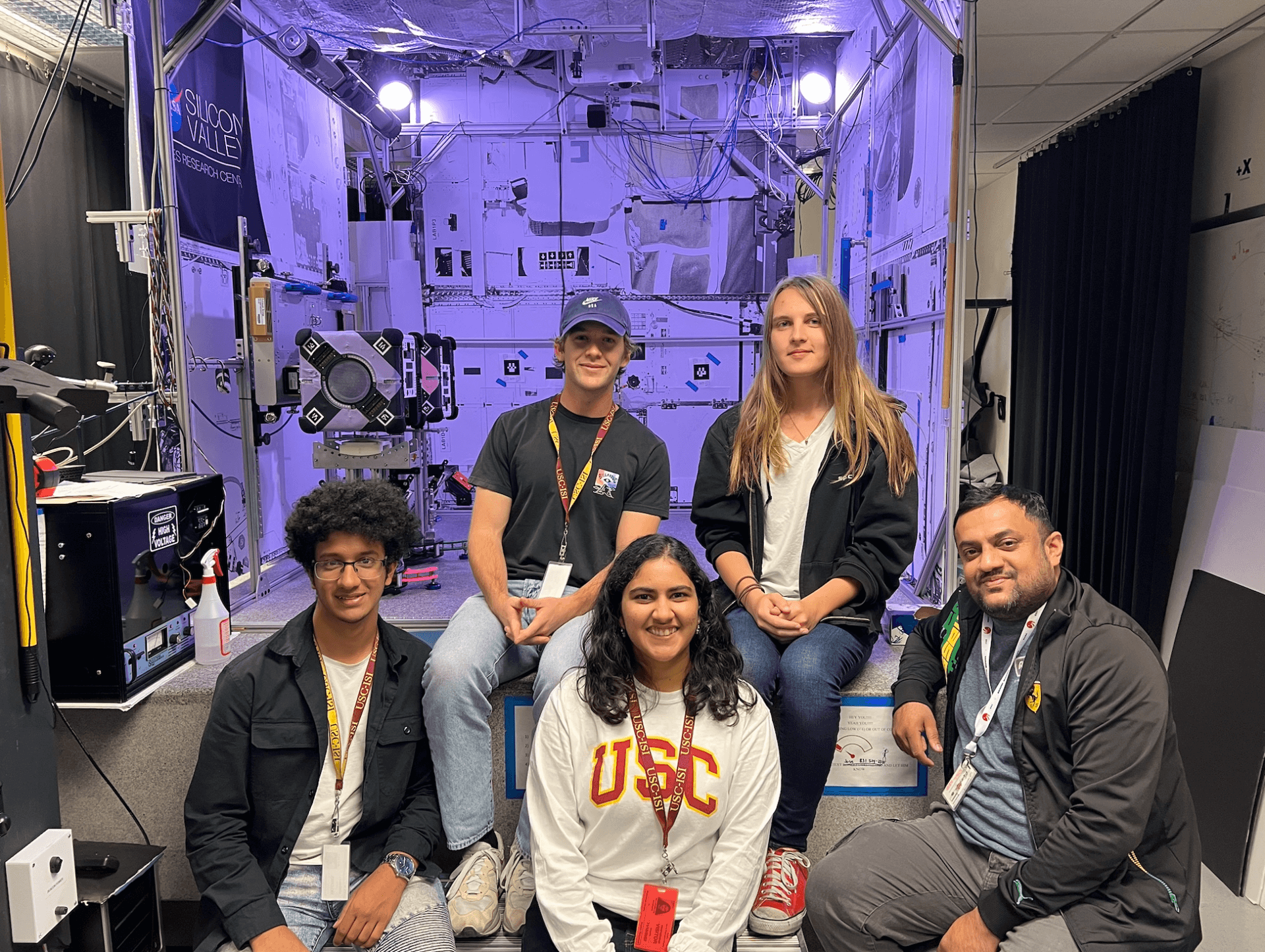
The first test of CLINGERS with Astrobee in NASA Ames ground Facility, students from left to right are: Sami Haq, Henry Adam, Shobhita Rajashekar, Julia Schatz and Adarsh Rajguru. Photo Credit: Juan Miche Rosales/USC
Shobhita Rajashekar, Avionics Engineer at SERC, says that these Astrobees are meant to help astronauts on board, by “flying around on their own to do some tasks autonomously.” This would allow the astronauts to “get a little more free time in their schedule,” she added.
The docking and rendezvous system CLINGERS aims to prove possible with the space station experiments this summer is forward looking in nature. Barnhart stressed that CLINGERS can do more than just get rid of space debris or perform tasks for astronauts.
“The whole point is to begin thinking about how you build really big things in orbit–you need ways to hold pieces in place. It’s not like on the ground at a construction site where you pull up a truck and you drop all the beams,” Barnhart explained.
“In space if you drop the beams–it’s gone.”
SOUL
So, REACCH and CLINGERS can capture debris, but how do they get close enough so that the debris are in reach? This is where SERC supported an industry partner (Busek Corp.) on their SOUL or Spacecraft On Umbilical Line project.
Rahul Rughani, Post-Doctoral Researcher at ISI, described how the SOUL project is connected to REACCH and CLINGERS, and SERC’s role.
“SERC is supporting the industry partner on designing a larger satellite that would house the SOUL spacecraft. The concept of SOUL is to be deployed on a tether that can then get close to a piece of space debris. However, SOUL needs a device on the end of it to grab and attach to the debris. This is where it is possible that the REACCH device, the CLINGERS device, or even a new device that we haven’t yet tested could be used”
SOUL, Rughani says, is a “small satellite attached to a bigger satellite,” in an umbilical line manner. Once a piece of debris is successfully captured, the spacecraft would then “bring it to a low enough orbit where the debris would burn up in the atmosphere.”
SOUL is still in the works, but much of the analysis, Rughani says, is done. The next step is getting the funding to actually build it.
More To Come
Speaking of funding, the four teams that are part of the SERC STTR will soon be in the process of applying for the more competitive Phase 2 of the Orbital Prime program. Applications for Phase 2 will be submitted in March through April of this year.
If selected to move on, SERC and ISI will receive a larger grant to continue developing these projects. Phase 2 is focused on prototyping–moving the process from design and assessing feasibility to actual construction.
Barnhart is excited about the future of space debris remediation technology and ISI’s role in creating some of it
“ISI/ASTE and SERC are literally at the nexus of an amazing robust research capability that is going to last at least a decade if not more,” Barnhart said.
(1)Rendezvous and proximity operations technology describes maneuvering two or more space objects close enough to each other where they can interact.
Published on April 4th, 2023
Last updated on April 10th, 2023





